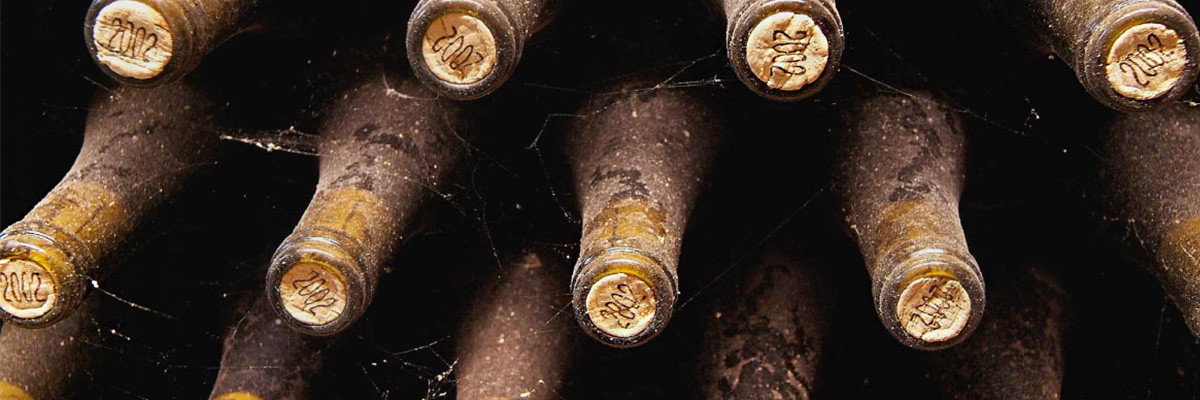Vintage
Millésime 2019
2019 in Centre-Loire: elegance and concentration.
Once again the vines have successfully managed a particularly dry year interspersed with several heatwaves.
The season has been gruelling not only for the plants, but for the women and men working in the vineyards. However the result looks promising.
Wine region
Winter 2019 ranked as one of the mildest. Despite January posting typical temperatures for the season, February was exceptionally mild from 13th to 28th. The other key marker for this winter was the rain gauge: down 30% on the average rainfall.
Spring, like February, alternated between lovely hot, sunny periods and more unsettled weather with temperatures that were sometimes very cool for the season. This split April into two periods. The first was cooler, with several overnight frosts which slowed plant growth, and the second was milder. Given these conditions, the plant cycle started in mid-April but was accompanied by particularly cold temperatures between 11 and 15 April. Temperatures of -4°C were regularly recorded near the buds. Once again, everything was done to minimise their destruction. Luckily, the four nights of frost resulted in little damage as the air and ground remained dry. Only the Châteaumeillant vineyard was affected, suffering significant damage and bringing up bad memories (see the 2017 vintage). The quickly rising temperatures observed in the final ten days of April enabled the vines to grow quickly. The alternating frosts and high temperatures cancelled each other out and April’s temperatures ended up within the average range.
May was much more remarkable: it was cold! The overall temperatures were cool throughout the month (2°C below average). Vine growth languished and the leaves were pale. The lack of rainfall continued to be significant: down 40% in May. However, these conditions were very unfavourable for mildew. Protection against this fungus only started in the last ten days of May.
June started with milder temperatures and some rain. Vine growth accelerated and vineyard work kept pace. The threat of mildew remained extremely low, unlike the threat of powdery mildew where vigilance is a must in the sectors with a long history of it. On 15 June, the first flowers appeared. However, blossoming only truly started in the vineyards around 20 June. It initially started slowly, due to the relatively cool temperatures for the season. Summer temperatures arrived from 24 June and flowering finished soon after. This first heatwave had quickly visible consequences: significant coulure and millerandage.
Summer 2019 was marked by a succession of heatwaves and the absence of rain, down 60% on usual summer rainfall! In several sectors, the foliage showed signs of drought. After the first record heatwave in June, a second heatwave arrived in late July. It was particularly intense, with temperatures of 40°C recorded at vineyards. Of course, such high temperatures had an impact on the vines and grapes. A lot of heat damage was visible. This varied depending on the grape variety, orientation, etc.
The Châteaumeillant vineyard was once again punished by weather events with thunderstorms and rain in the final days of July accompanied by hail, often causing damage to the grape bunches and foliage.
Veraison started in the first ten days of August. Slowed by the very dry conditions, it developed gradually but with very good grape health.
Ripening
This first part of the cycle was marked by another heatwave in late August, with temperatures over 30°C. Once again, burn marks were observed on the grapes. In September, ripening continued under optimal conditions. The mornings were fresh and the afternoons mild to warm. The thermal amplitude was large, promoting aromatic and phenolic maturity. The bunches continued to grow despite the lack of rain. The sugar levels in the fruit continued to increase. The acidity was preserved. Grape tastings revealed good potential but also suggested a need to wait for higher sugar levels in order to achieve the desired fresh, ripe fruit flavours.
Grape health was impeccable on the eve of the harvest.
Harvest
In the end, the ripening cycle was shorter for this vintage. Harvest began on 5 September for the Pinot Gris at Reuilly. Sauvignon was harvested from 16 September for other appellations, followed by the red varietals. The first part of the harvest took place in dry weather with temperatures above seasonal averages, then the rain returned on 24 September. This did nothing to dampen the winegrowers’ spirits as all acknowledged that the rain was needed to alleviate the dry soils.
First impressions of the vintage
2019 vintage wines will be expressive. Aromatic purity will be one of their characteristics.
The whites release an aroma of white flesh fruit notes supported by a wonderful range of citrus notes. Hints of freshness and sweetness also mingle. They have a full mouthfeel and crispness on a mineral foundation. They combine substance and elegance. The rosés have strong hues. Fruity flavours dominate (blood orange and raspberry), paired with a balanced intensity. The reds have good potential. The wines have a lovely ruby colour and present supple tannins and a pleasant freshness. The fresh red fruit notes create an indulgent flavour.
2019 vintage: a great success that confirms the essential role of terroir.


